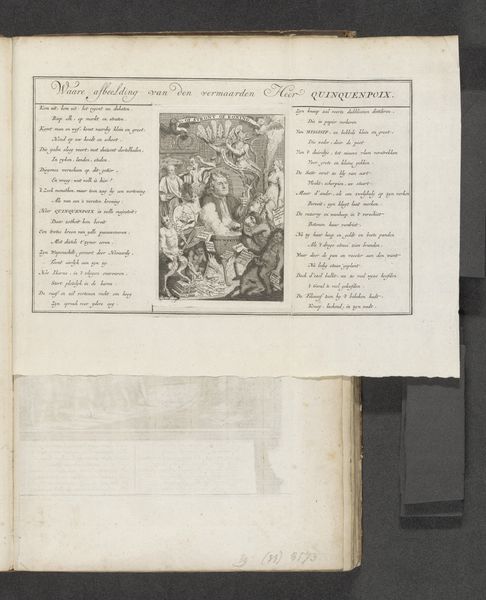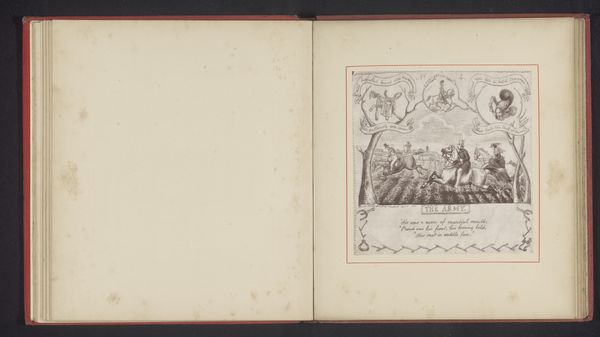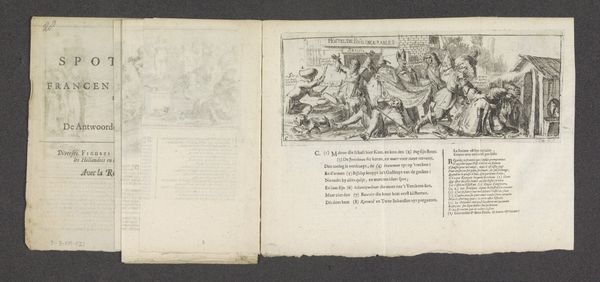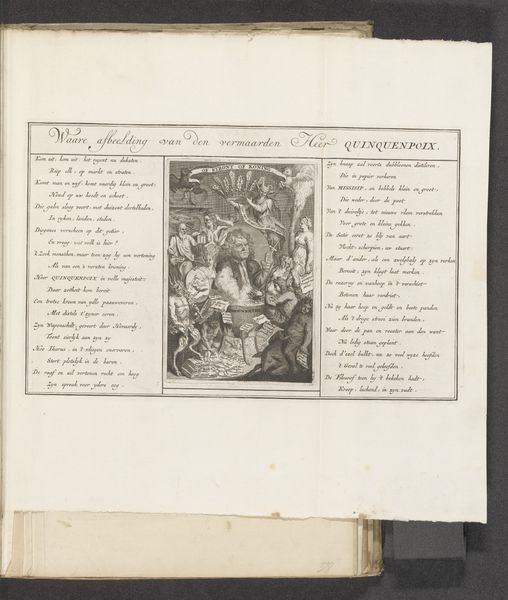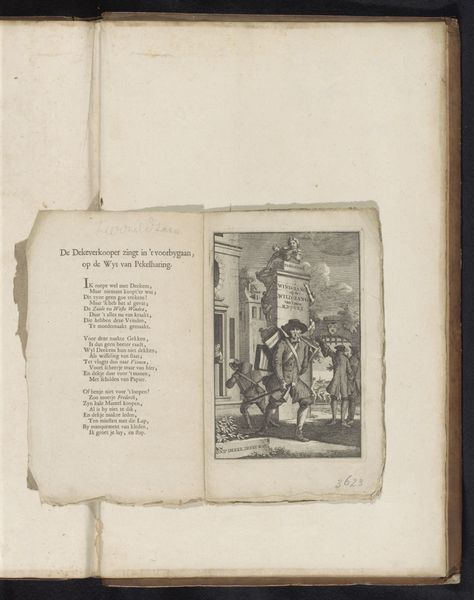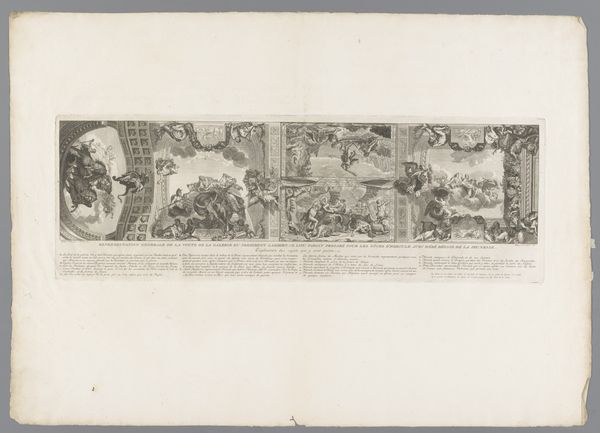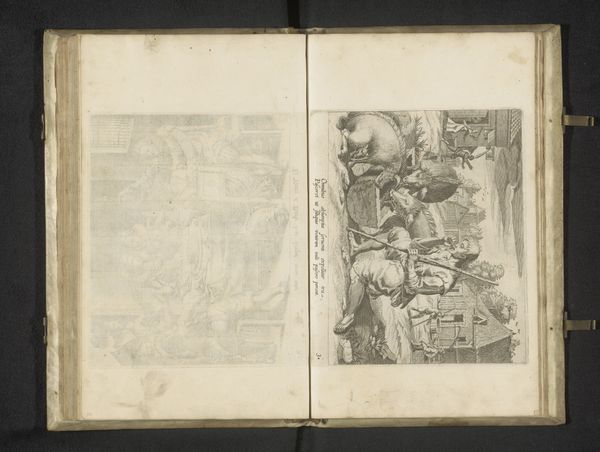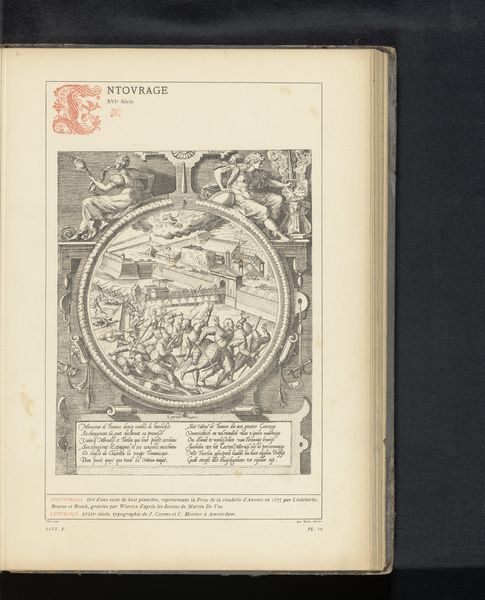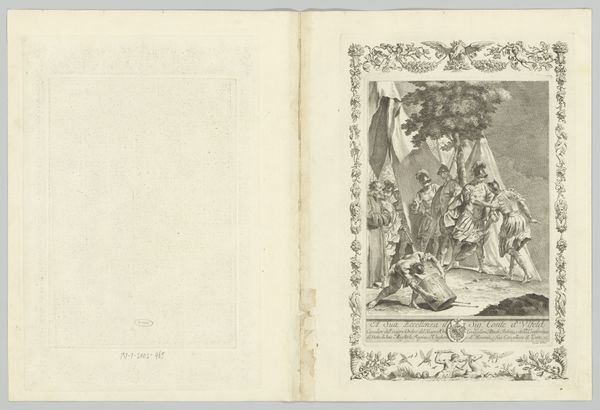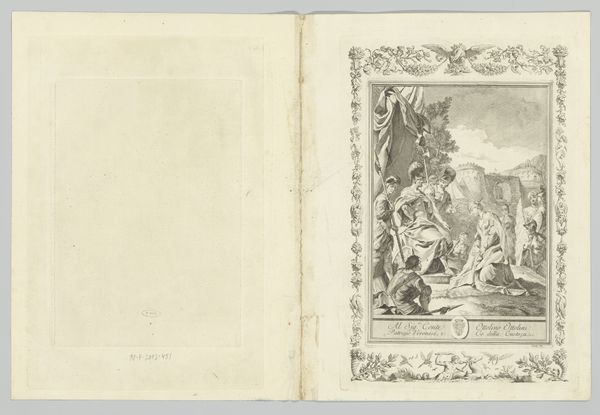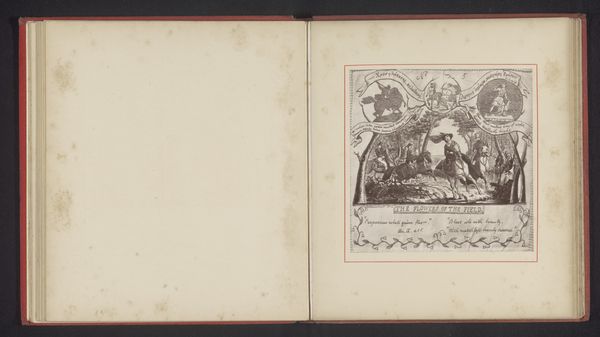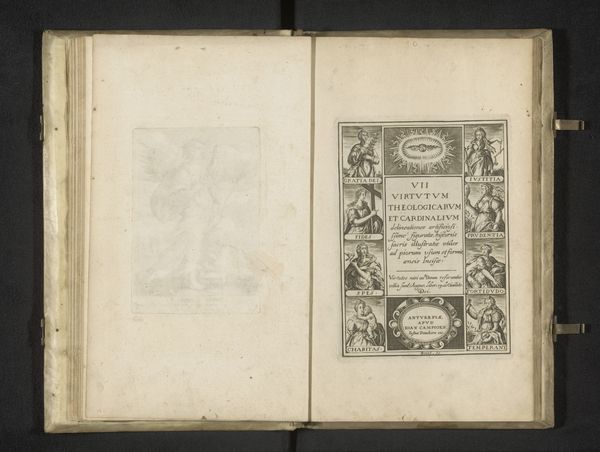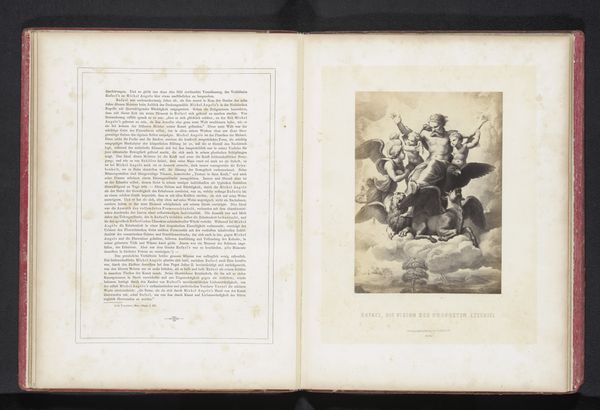
print, paper, engraving
#
narrative-art
#
baroque
# print
#
figuration
#
paper
#
history-painting
#
engraving
Dimensions: height 185 mm, width 230 mm
Copyright: Rijks Museum: Open Domain
Editor: Here we have "Hollands antwoord op Hollands treurtoneel, 1673", or "Holland's Response to the Dutch Theater of Misery, 1673" by Romeyn de Hooghe. It's an engraving on paper, currently residing at the Rijksmuseum. Looking at the busy composition and somewhat satirical tone, I'm curious, what do you see in this piece from a historical perspective? Curator: It's a powerful piece of propaganda. De Hooghe was a master of etching and political commentary, and this work embodies the fraught relationship between the Dutch Republic and France during the Franco-Dutch War. Think about the context: the Dutch Republic was under immense pressure, facing invasion, and this print is essentially rallying the troops, using imagery to depict Dutch resilience against French aggression. Look at how Justice is presented, seemingly undermined and in distress. What message do you think De Hooghe is sending by positioning Justice in such a state? Editor: That is something I didn't initially notice. By depicting Justice in such disarray, almost powerless, does that suggest that the conventional systems of fairness and governance were failing or being corrupted during the war? Curator: Precisely. It reflects the anxiety and disillusionment prevalent at the time. Also, consider who this image was *for*. Prints like these circulated widely; they were a form of mass communication, shaping public opinion. What do you imagine the impact would be on someone seeing this in a public setting? Editor: I suppose it would be quite persuasive, invoking feelings of patriotism and potentially fueling resistance against the French. It served a direct political purpose, beyond just being aesthetically pleasing. Curator: Exactly! This is where the political agenda comes into play. Art as a vehicle for socio-political messaging. Studying such work encourages me to remember to always consider artwork not just as objects of aesthetic value, but as important testaments of collective historical narrative and propaganda. Editor: That makes perfect sense. Thank you! Considering art in the framework of the socio-political forces acting upon it helps give another depth to the piece, making art viewing all the more rewarding.
Comments
No comments
Be the first to comment and join the conversation on the ultimate creative platform.
